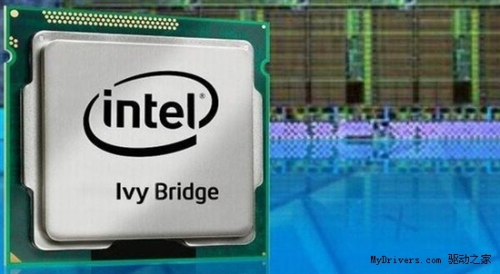 Sandy Bridge strictly locked the FSB, allowing only the K Series to adjust multipliers. It made DIY players quite dissatisfied, after all, the fun of overclocking has completely lost. Perhaps these lessons have been learned. The next-generation 22nm Ivy Bridge will make some changes, but unfortunately it is very limited.
Sandy Bridge strictly locked the FSB, allowing only the K Series to adjust multipliers. It made DIY players quite dissatisfied, after all, the fun of overclocking has completely lost. Perhaps these lessons have been learned. The next-generation 22nm Ivy Bridge will make some changes, but unfortunately it is very limited. The reason why Sandy Bridge restricts overclocking in this way is mainly to place the clock generator inside the processor rather than traditionally placed in the chipset. Intel insiders have privately admitted that this approach is not wise, but the next generation of Ivy Bridge has basically no changes in the processor, and the need to ensure backward compatibility, so this "error" can only be inherited.
As a result, Ivy Bridge naturally cannot fully open the frequency multiplier, but Intel still managed to make some remedy. Players who have experienced the Pentium 2 era should remember that they had to use the DIP switch to choose between 66MHz, 84MHz, 100MHz and other limited parameters. Well, Ivy Bridge is going to go back like this, it will also provide several benchmark FSBs to allow players to switch back and forth, and each FSB has about 5% of adjustment space up and down, such as 100MHz can be raised to 105MHz or dropped to 95MHz .
It is not yet known what the Ivy Bridge's other reference FSBs are. It should be 133 MHz and 166 MHz.
As for the Sandy Bridge processor on the 7 series motherboard can also enjoy this treatment, is still unknown, but in theory should be feasible to see the motherboard manufacturer's design.
In addition Ivy Bridge's memory frequency support will be up to DDR3-2133, motherboard manufacturers will even be exaggerated DDR3-3000, which can be much more conservative than Sandy Bridge DDR3-1333 specifications, will also greatly better than AMD APU and bulldozer platform DDR3-1866. Before DDR4 arrived, DDR3 finally entered the frenzy era.
Lipo Laser Ultrasonic Liposuction Machine
RUIPU MEDICAL EQUIPMENT CO.,LTD. , http://www.ruipumedicals.com
